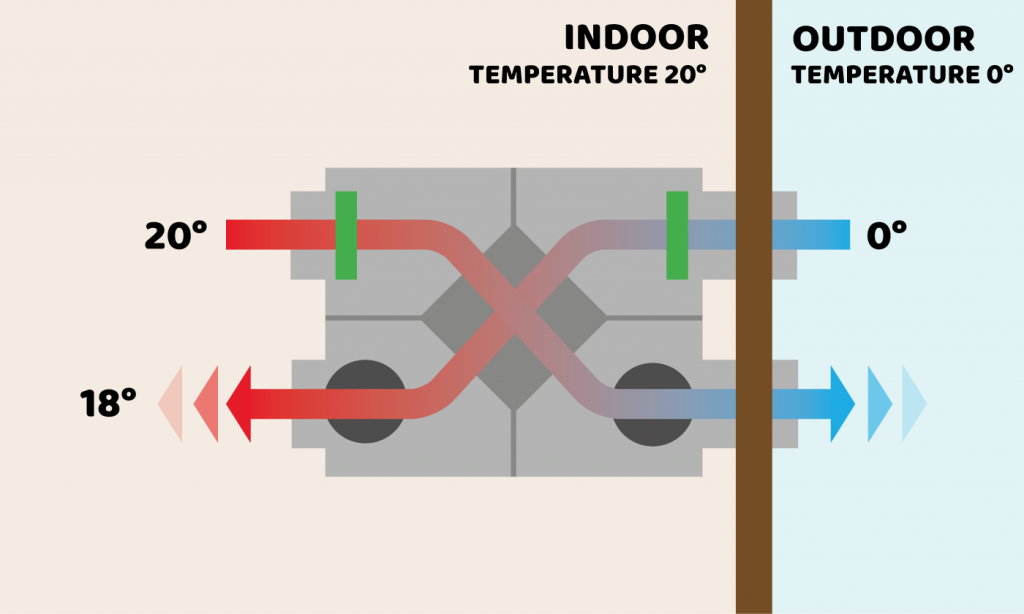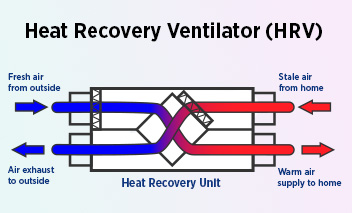Quick Guide: What to Consider Before Buying HRV
Wiki Article
The All-Inclusive Overview to the Uses of Heat Recovery Ventilation in Modern Buildings
Heat Recovery Ventilation (HRV) systems stand for a substantial improvement in building modern technology (HRV Heat Recovery Ventilation). They supply a method for trading stale interior air with fresh outdoor air while decreasing energy loss. This strategy not only enhances interior air quality yet likewise contributes to power efficiency in both household and industrial structures. Comprehending the numerous applications and benefits of HRV can disclose its essential role in modern-day design and sustainability initiatives. The effects of this innovation deserve checking out betterUnderstanding Heat Recovery Ventilation Solutions

Although numerous modern-day buildings prioritize power efficiency, understanding warmth healing air flow (HRV) systems is essential for enhancing indoor air quality and minimizing energy usage. HRV systems work by moving warm from stagnant interior air to incoming fresh air, properly preserving comfy interior temperature levels while minimizing power loss. These systems consist of a heat exchanger, fans, and ductwork that facilitate the circulation of air. Throughout winter, HRV systems record and recycle warmth from the outward bound air, while in summer, they can assist cool incoming air. By continuously exchanging air, HRV systems also decrease humidity and the concentration of indoor pollutants. Proper installment and upkeep of HRV systems are vital for their efficiency and effectiveness in boosting overall building efficiency and convenience.
Benefits of Heat Recovery Ventilation
Heat recovery ventilation systems offer numerous advantages that improve both energy performance and indoor air top quality in contemporary buildings. By capturing and recycling energy from exhaust air, these systems significantly reduce cooling and heating costs, bring about reduced energy consumption. They preserve a steady circulation of fresh outdoor air, decreasing the risk of interior air pollutants and irritants. This continuous exchange aids control moisture levels, protecting against mold development and ensuring a healthier living setting. Additionally, HRV systems add to sustainability objectives by reducing total carbon footprints. Their capability to optimize air flow without sacrificing thermal comfort makes them a beneficial addition to modern building design, advertising both financial and environmental advantages.Applications of HRV in Residential Buildings
As home owners progressively focus on power effectiveness and indoor air top quality, the applications of warm recuperation air flow (HRV) systems in property buildings have actually come to be a lot more common. HRV systems are particularly beneficial in tightly secured homes, where preserving fresh air blood circulation is crucial for avoiding dampness buildup and indoor contaminants. They effectively move warmth from outbound stale air to incoming fresh air, lowering power expenses connected with heating & cooling. Furthermore, HRVs can improve comfort levels by managing moisture and temperature level. They are likewise versatile for different property styles, consisting of single-family homes and multi-unit structures. Generally, incorporating HRV systems sustains sustainable living methods while making sure a much healthier interior atmosphere for passengers.HRV in Industrial and Commercial Setups
In business and commercial setups, the execution of warmth recovery air flow (HRV) systems has actually ended up being progressively critical for optimizing energy effectiveness and maintaining air top quality. These systems properly move warm from exhaust air to incoming fresh air, minimizing the requirement for additional home heating or cooling. This not only lowers energy expenses but additionally adds to sustainability efforts. Industries such as production, warehousing, and office complex profit substantially from HRV click for more systems, as they assist regulate temperature level and moisture levels, guaranteeing a comfortable and efficient environment. HRV systems aid in eliminating contaminants and excess dampness, enhancing interior air quality. As laws around air high quality become more stringent, the adoption of HRV innovation is likely to expand, making it a critical part of modern commercial and industrial facilities.Future Fads in Heat Recovery Ventilation Modern Technology

Regularly Asked Inquiries
How Does Heat Recovery Ventilation Effect Indoor Air Top Quality?
Heat recovery ventilation greatly enhances indoor air quality by constantly exchanging stale indoor air with fresh exterior air while recouping energy. This process decreases pollutants, keeps excellent moisture levels, and guarantees a much healthier atmosphere for residents.Can HRV Systems Be Set Up in Existing Buildings?
HRV systems can certainly be installed in existing structures. Retrofitting might require alterations to ductwork and air flow layouts, yet it significantly enhances power efficiency and interior air high quality, making it a practical option for older frameworks.What Maintenance Is Needed for HRV Solutions?

Are There Details Climates Where HRV Is A Lot More Effective?
Heat recovery ventilation systems are particularly efficient in climates with substantial temperature distinctions between periods. These systems optimize power efficiency by recouping heat from exhaust air, making them ideal for both cold and published here reasonably warm settings.Just How Do HRV Equipments Affect Power Expenses?

Report this wiki page